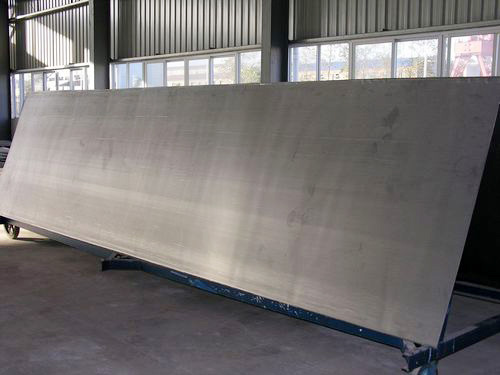Popo
I'm Sexy and I Know It

Image Source
Intent: To create a highly durable, highly protective, and extremely heavy (weight-wise) armor variant unique to the soon-to-be-announced Republic Flagship
Development Thread: A Steel Hide
Manufacturer: Tenloss Corporation, Incom Corporation
Model: Compressium
Affiliation:"Affiliation: Galactic Republic, Open Market
Modularity: Aside from being molded to armor updated or added sections of the Republic Flagship it was designed for, there is absolutely no modularity.
Production: Semi Unique
Material: Compressed Alusteel
Classification: General Purpose
Weight: 600.0188% heavier than standard Alusteel
Quality:
Special Features:
- Extremely heavy
- Extremely durable
- Extremely expensive
- 1 point drop in maneuverability
Description:
As development of the new Republic flagship intensified, the realization that a highly durable, highly protective armor type would greatly benefit the ship's combat performance was realized. The head of the Tenloss Corporation and Supreme Chancellor of the Republic, along with Senator [member="Alyesa Praxon-Organa"], the head of Incom Corporation, spearheaded the project.
After a great deal of searching and testing, the concept of molecularly compressed armor was selected for the new, experimental plating for the flagship. Made of compressed Alusteel molecules, the armor meets all expectations, though there are some rather unique aspects of the material.
The armor is highly durable and withstood full barrages of standard weapons with little effect. Heavier weapons saw more effectiveness, but the armor weathered the assaults admirably with only minor damage. Composite beam weapons gouged the armor plating, leaving furrows in the metal, but took a great deal of time to penetrate the plating. Heavy, specialized weapons, like the Republic's P2-CA1 saw increased performance against the armor plating, but required a handful of shots before penetrating the plate. Ion weapons were found, with the exception of sensor nodes or emplacements on the hull itself, to be ineffective against the armor itself, though it could damage sensors and equipment mounted on the hull. The armor itself is not capable of blocking EMPs.
Missile weapons saw little effect around the standard payload range, both regular and cluster munitions. Assault warheads saw increased performance with standard munitions, causing damage to the plates themselves, though multiple impacts were required for this to be seen. HVGs were not tested by Tenloss, but theoretically it is believed that a small number of impacts could damage or penetrate the armor plating entirely, approximately 2-4 impacts depending on location, range, and angle of impact.
In short, the armor is highly resistant to most forms of attack, even if only for one to two hits. The project was deemed a total success and production was initiated as soon as the compression ratios were delivered. Between Tenloss and Incom, there is enough armor plating to cover the planned ships it was designed for as well as to replace damaged or destroyed plates over time.
The armor does, however, have some rather severe drawbacks.
The plating is very, very, very heavy. At a 600.0188% increase in weight compared to standard Alusteel, the armor cannot be fielded on most ships and, on the ships it can be fielded on, only those with the same structural durability known to Assault class ships. The sheer mass of the armor requires heavy, powerful engines to move the ship and easily turns the vessel equipped with the plating into a lumbering behemoth. The armor plates cannot be repaired in the field as the plating itself is unable to bend without highly advanced and powerful equipment. The planned ships will not carry replacement plates of this material which generally makes the equipped ships unsuitable for extended campaigns. The armor is also extremely expensive to produce and armor the ships with the material, causing the ships in question to be held as a last resort to prevent the loss of the expenses placed in the armor itself. The armor is also not resistant against lightsabers, though the material will slow down such weapons significantly, much like Turadium.
The last and most devastating of the weaknesses was expunged from Tenloss records and can only be found from those few scientists who were privy to the specific tests and within Popo's personal diary. The armor plating is highly vulnerable to certain frequencies of vibration. This was noted during tests against assault-grade cluster munitions when the impact explosions vibrated the metal into cracking. When confronted with sustained barrages from weapons that can cause those levels of vibrations, namely assault-grade cluster munitions (capital ship grade), heavier sonic weapons, seismic charges, etc. the armor will crack and splinter, leaving the affected area vulnerable and open to heavy damage. This weakness was deemed a calculated risk, but expunged from the records as a preventative measure. Should the enemy discover the weakness, the ships equipped with the armor will find their Achilles heel exploited more often than not.
On a special note, the armor can be used at a reduced compression ratio* for smaller ships (only available at semi-unique production), but will be more vulnerable to attack and damage from standard weapons than the heavier variant. The vibration weakness also becomes more profound against standard sonic or seismic weaponry both in lower vibration frequencies needed for damage and due to the higher proliferation of such weapons in atmosphere, should those ships leave space.
* The vulnerability and weight depend on the percentage dropped. During the dev thread, I would take the rate of compression (for example, the full variant was 62.99% repeating) and drop a few points to determine the weight increase (for the full variant used, 600.0188% weight increase). For lower compression ratios, I would follow the same rate meaning that a 30% would drop to approximately 270-290% increase in weight or something similar. As for vulnerability, I would take the percentage compressed (full variant being 62.99% repeating) and subtract it from 100%, giving the vulnerability ratio to vibration (for the full variant, it would be 37.01% vulnerability, something that I generalized saying that assault cluster munitions and similarly powerful would reach with sustained barrages).

